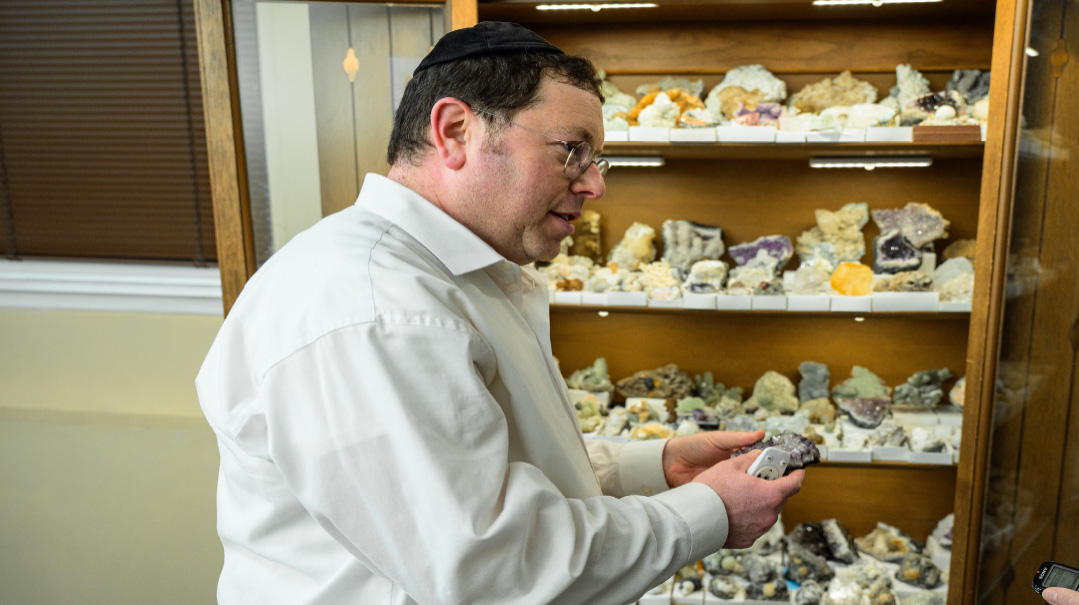City of Tears
| March 5, 2024A trip to Mumbai where the unthinkable happened
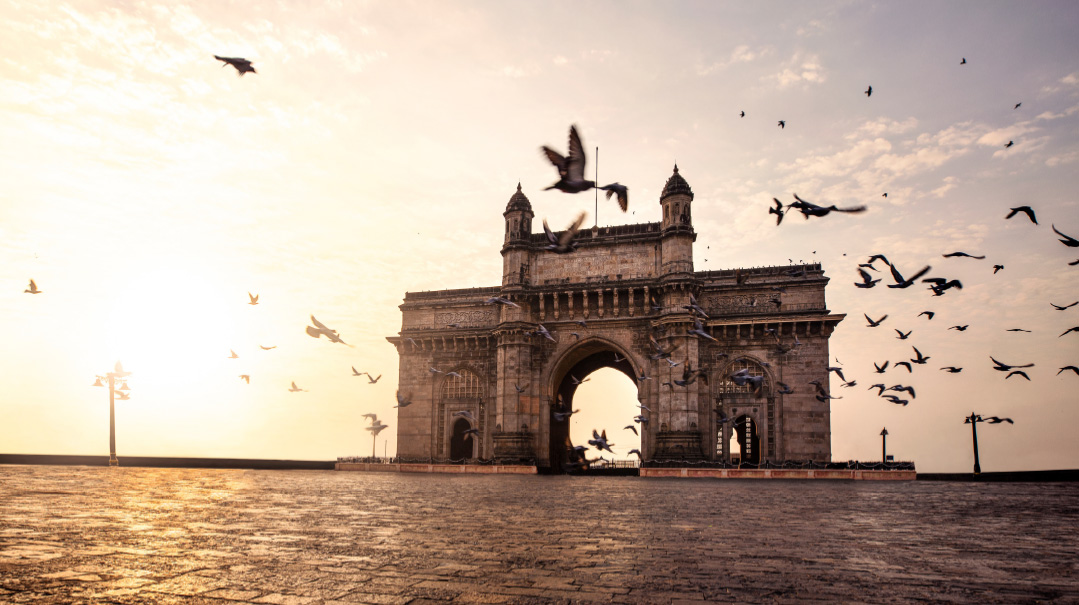
Photos: Moshe Klein
To Jews worldwide, Mumbai is a city whose tears are permanently engraved on our hearts, ever since the Chabad House terror attack of November 26, 2008. Known as Bombay until 1995, Mumbai is also a hub for India’s ancient Bene Israel community, making it a locale that globetrotting Moshe Klein had to see for himself.
Shalom, Mumbai
After having spent three days in Kolkata last winter, Moshe Klein was looking forward to a long weekend in Mumbai to gain a different perspective on India’s Jewish communities. While India has several states with Jewish populations, Mumbai was the destination that beckoned to Klein, and he timed his visit for the 15th yahrtzeit of the deadly massacre at the local Chabad House, in which Rabbi Gavriel and Rivky Holtzberg and four others were murdered.Klein headed straight from Mumbai’s main airport to the Magen David Synagogue, built in 1864 by Sir David Sassoon to meet the needs of the growing local Baghdadi Jewish community. As in other countries with significant Muslim minorities where Klein has traveled, the shul is located in a Muslim area, where the buildings’ distinctive architecture of spires and cusped arches is richly ornamented.
“History-wise, Jews get along better with their Muslim neighbors than anyone else,” explains Klein. “There is often a mutual respect.”
The shul was restored in 2011, its original yellow façade repainted a spectacular shade of light blue, a color used in several other local shuls as well. The compound where Magen David stands is home to two schools that once served the local Jewish community — the Eliza Ezra Ezekiel Sassoon High School, built in 1902, and the Sir Jacob Sassoon High School, founded in 1908. While both are still operating and run by a Jewish trust, their students have no connection to Klal Yisrael, a situation that evolved as Mumbai’s Jewish residents emigrated from the area. This reality echoes what Klein encountered in Kolkata, but he found Mumbai’s “Jewish” schools to have even less of a Jewish flavor than those he had seen just days earlier in eastern India.
The trip from the airport to the Magen David Synagogue normally takes 25 minutes by car, but Klein decided to travel the 18 miles by rickshaw, a decision that he admits wasn’t the best choice.
“Going by rickshaw definitely sounds cooler than it is,” says Klein. “It is bumpy and good for a local ride, but this took closer to an hour. I don’t remember the exact cost of the trip, but it was just a few dollars.”
After going without a minyan during his three days in Kolkata, Klein was happy to find more than a quorum in Mumbai, and he davened Shacharis with just over a dozen men. Most were elderly, including one man who approached with a tzedakah zekel and was clearly disappointed by Klein’s modest contribution. Klein held firm on his donation, but ended up giving an additional contribution so that he could take pictures in the shul.
“He told me that it would cost 500 rupees for me to take pictures,” recalls Klein. “He brought me an official photographer’s receipt, so I guess I wasn’t being scammed. If that’s how they sustain themselves, then so be it.”
While Magen David is clearly in need of the services of a good handyman (at the very least), it was hard not to be impressed by its stately architecture. The property is a compound of sorts, with on-site lodging for travelers, as well as a kitchen that functions as a restaurant. Klein declined an offer from the cook to make him anything he wanted for breakfast for $20, and chose to pass on the lodging as well, preferring to stick with a more updated hotel and whatever food he could scrape together on his own.
With its majestic air, Magen David almost felt out of place on the Jewish compound, situated amid chaotic streets teeming with noise and throngs of locals. Venturing a little farther, it was clear to Klein that the surrounding area had definitely seen better days.
“There were no sidewalks, and the kids were running around without shoes,” says Klein. “Because India is very densely populated, you have to push yourself through to get wherever you want. There are a lot of beggars, more than average, and there are always people on the streets trying to sell you things.”
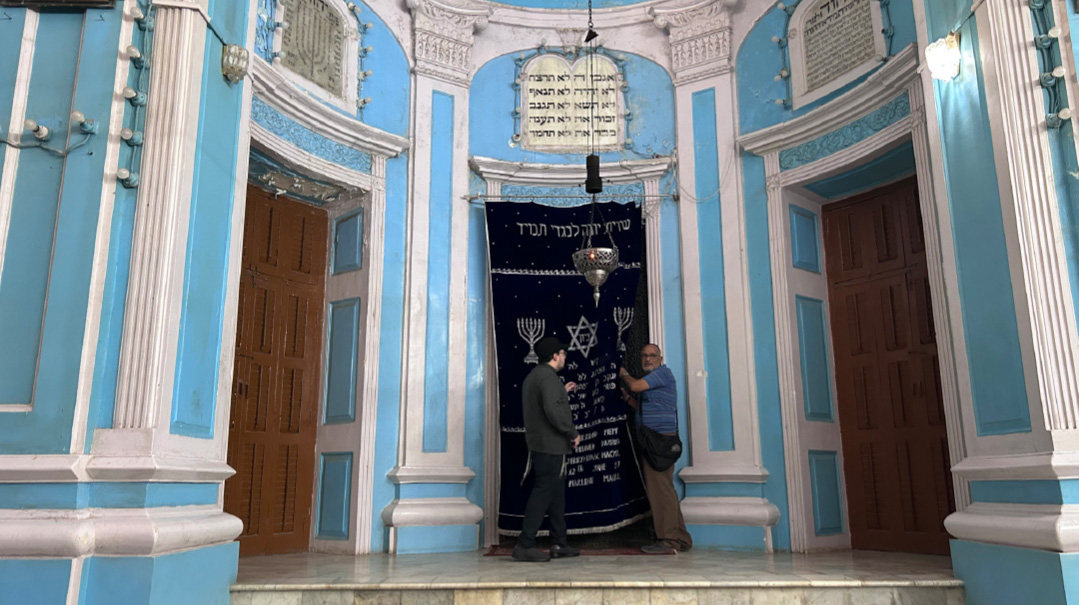
It was a pleasure to finally daven with a minyan, and the 500 rupees were a small price to pay for some memorable pictures
Legacy or Lore?
India’s Jewish population can be divided into three categories: Baghdadi Jews, Cochin Jews, and Bene Israel, all of whom have rich histories. The Cochin Jews, with their dark, almost Yemenite appearance, believe that their roots in India stretch all the way back to the time of Shlomo Hamelech, while among the Bene Israel there are those who say their cemeteries have 2,000-year-old graves. The Baghdadis are the most recent arrivals, settling in India and other locales after fleeing persecution in Iraq in the 19th century.
Klein decided to draw his own conclusions, setting out to find the earliest reliable documentation that could prove the existence of Jews in India. His research led him to a letter from the Cairo Genizah, sent to the Rambam by his younger brother David in 1171, discussing the difficulties of traveling and also mentioning an upcoming trip to Malabar, located on India’s southwestern coast.
Klein also came across mention of another letter written by David ben Maimon to the Rambam in the late 1170s, saying that he was in India and learning Torah regularly, and had also come across a small community of practicing Jews. Whether those Jews were the Cochin Jews or the Bene Israel remains unclear.
In addition to the letters between the Rambam and his brother David that were found in the Cairo Genizah, another letter from 1185 sheds additional light on their relationship.
Writing to Rabbi Yefet, an Akko dayan, the Rambam shared how his brother had died eight years earlier in a shipwreck in the Indian Ocean, leaving him completely distraught. The Rambam described how the Yissachar-Zevulun relationship he shared with his brother had given him the ability to remain in the safety of his own home, while his brother was engaged in trade. With David ben Maimon carrying money and goods belonging to himself, the Rambam, and others at the time of shipwreck, the Rambam told Rabbi Yefet that David’s death left him caring for his brother’s widow and daughter, and unable to sustain himself financially.
Whether David ben Maimon’s death motivated the Rambam to become a doctor, or if he had already been engaged in the practice of medicine at that time, is yet another historical mystery, but the letter is yet another proof of a Jewish presence in India in the late 12th century.
“That was as far back as I could trace it, but there were likely Jews in India before then as well,” says Klein, noting that Megillas Esther contains a reference to India being part of Achashveirosh’s massive empire, which had Jews in each of its nations.
While there is much to learn about each of Mumbai’s Jewish communities, it was the Bene Israel community that most piqued Klein’s interest, and he focused exclusively on them during his brief visit. Whether or not the Bene Israel are accepted as halachic Jews is up for debate — according to Klein, Rav Ovadiah Yosef held that they were, while others, including Rav Ovadia Hedaya, Rav Moshe Feinstein, Rav Shlomo Zalman Auerbach, Rav Shlomo Shimshon Karelitz, Rav Nissim Karelitz, and ybdlcht”a Rav Moshe Sternbuch said that Bene Israel would need to undergo conversion in order to be considered Jewish.
Early members of the Bene Israel lived in villages, and many worked as oil pressers, earning them the nickname shanivar teli — the Saturday oil pressers — because they didn’t work on Shabbos. With no contact with any other Jewish communities for many years, bits and pieces of the Bene Israel’s Yiddishkeit gradually began slipping away. Community members adopted the local Indian language, Marathi, as their own. Even as their knowledge of Hebrew and most tefillos faded, they clung to other aspects of Yiddishkeit including bris milah, kashrus, Shabbos, and the Yamim Tovim that are mentioned in the Torah.
The Bene Israel speak of a man named David Rahabi who stumbled across their villages and recognized them as Jews, although exactly when that occurred remains up for debate. Rahabi is believed to have re-educated the Bene Israel about their heritage, and to have appointed men known as kajis to serve as spiritual leaders of sorts. In the 18th century, many Bene Israel moved to Bombay, where city life and the new opportunities available under British rule had them shedding their agriculture heritage and choosing other careers.
The arrival of Baghdadi Jews in Bombay in the 18th and 19th centuries was another turning point for the Bene Israel. The newcomers were glad to be able to take advantage of the existing Jewish infrastructure that had been created by the Bene Israel while they built their own institutions. The Bene Israel, meanwhile, relearned even more about Jewish life and customs from the Baghdadis, as well as from the Cochin Jews, who had started coming to Bombay. Even as the Bene Israel and the Baghdadi Jews each retained their own distinct traditions, Klein noticed one unique phenomenon during his visit to Mumbai.
“When you talk to the Baghdadi Jews, they say that they are Indian Jews, but the Bene Israel still identify themselves as the Bene Israel,” says Klein.
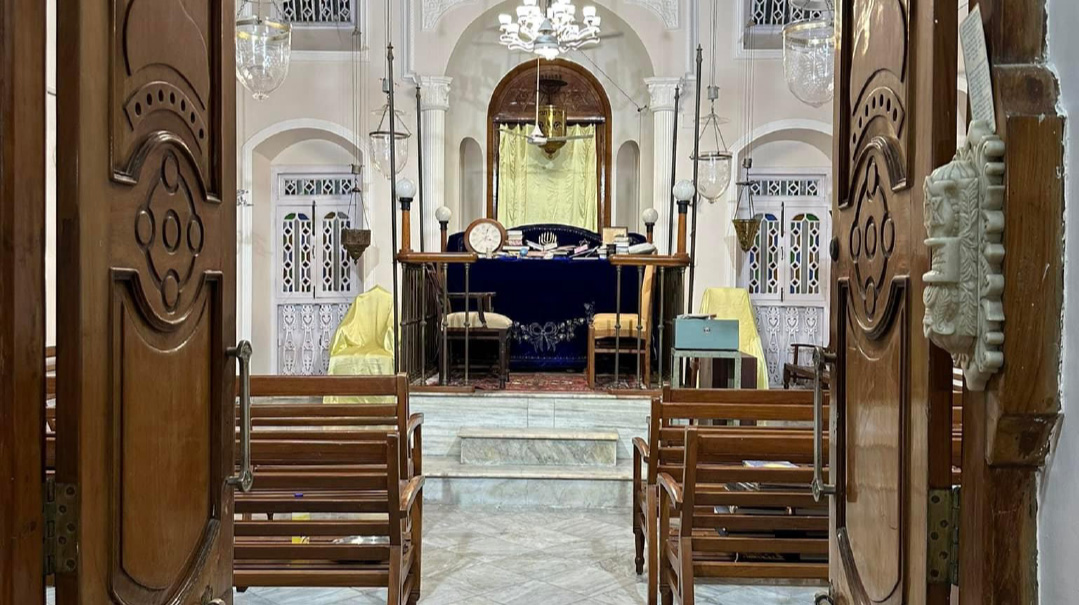
Alibag’s Magen Avot Synagogue might have been influenced by Baghdadi Jews, but it still proudly serves the Bene Israel kehillah
Stepping Back in Time
A day trip to the village of Alibag, a coastal town located approximately two and a half hours south of Mumbai, gave Klein a broader view of the Bene Israel. While there once were as many as 200 Bene Israel villages in the area, there are very few left, and only Alibag still has an active community.
In Mumbai, Klein had met mostly older Yidden; in Alibag, he was happy to find a mix of all ages, including two young families. The Bene Israel he met in Alibag seemed different in other ways, as well.
“In Mumbai, the Bene Israel felt more Baghdadi,” explains Klein. “They said ‘chazak u’baruch’ and had Sephardi habits. The people I met in Alibag felt more authentic.”
Alibag has only one shul, the Magen Avot Synagogue, built in 1840. It was renovated in 1910, and slight improvements were made in 2010. Because the community receives no outside support, raising funds for the shul is always difficult. It wasn’t lost on Klein that while Bene Israel have been in Alibag for several centuries, they have only had a shul for the last 183 years.
“It shows you the hashpa’ah that the Baghdadi Jews had,” says Klein. “The Bene Israel in Alibag probably had places they would go for prayer, but there wasn’t a shul in the way that we know it. Seeing that the Baghdadis built shuls when they came to Mumbai, Alibag’s Bene Israel decided to build a shul of their own.”
Magen Avot has minyanim on Shabbos and Yom Tov, and one of the people Klein met on his visit to Alibag turned out to be the village’s chazzan and shochet. He spoke perfect English and gave the impression of being educated, while most of the village’s residents are more involved in agriculture, with coconut oil their main product.
Interestingly enough, while many communities tend to have one central hub that serves the kehillah’s needs, the Jewish infrastructure in Alibag is a completely different story, with the local mikveh, matzah bakery, Talmud Torah, and shechitah house all built in nearby villages. But it was the blood painted on the outside of many of the houses, a custom that clearly dates back many, many years, that made the deepest impression on Klein.
“They do it on Pesach every year, and when Pesach comes the next year, they clean it off and do it again,” says Klein.
A quick stop at Little Chondhi, another of the nearby Jewish villages, showed a very different side of the Bene Israel, giving Klein the feeling that he was visiting a heritage center or a museum. Unlike Alibag’s active Bene Israel community, Little Chondhi was clearly a place whose once-vibrant Jewish presence had been relegated to the annals of history.
“It was yet another reminder that there was something here once that really doesn’t exist anymore,” says Klein.
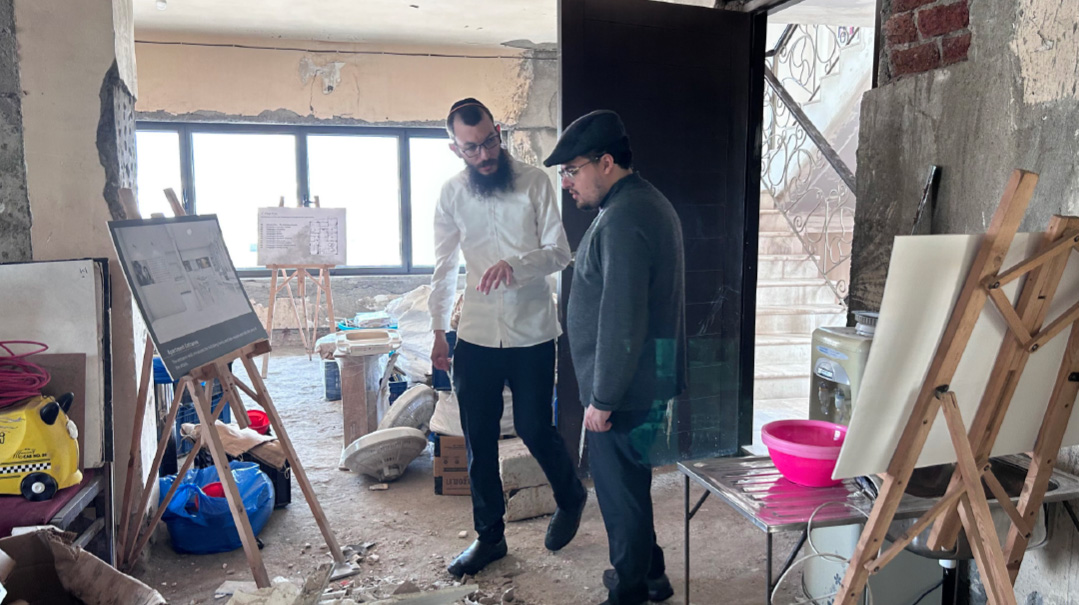
Fifteen years later, the bullets and blood on the walls of Nariman House still testify to the brutal murders of Rabbi Gavriel and Rivky Holtzberg, kashrus supervisors Rabbis Leibish Teitelbaum and Bentzion Kruman, and guests Norma Shvarzblat Rabinovich and Yocheved Orpaz. Rabbi Yisrael Kozlovsky stepped into the Holtzbergs’ shoes
House of Horrors
Jews worldwide who knew nothing about Mumbai learned more than they ever wanted to know on November 26, 2008, when terrorists conducted a two-and-a-half-day bloody rampage on multiple targets, including Nariman House, home of the local Chabad center. Echoes of the massacre still linger in the five-story building, whose walls and ceilings remain scarred by hundreds of bullet holes and faint bloodstains. Fifteen years later, security remains heavy at Nariman House, parts of which have been consecrated as a memorial to the victims of the terror attacks, resonating with themes of hope and goodness.
A guard posted outside Nariman House quizzed Klein about the purpose of his visit before agreeing to unlock the building’s heavy metal gates. The security measures continued inside, as Klein’s passport was photographed. After ordering breakfast at the on-site restaurant, Klein made his way upstairs to meet with Rabbi Yisrael Kozlovsky, director of Chabad Mumbai. As the two inspected lettuce leaves for the restaurant together, Rabbi Kozlovsky shared details of how the unthinkable had happened just 15 years earlier.
IT
was 9:30 p.m., the end of a busy day that had seen Chabad shaliach Rabbi Gavriel Holtzberg filling Nariman House’s freezer with chickens he had just shechted. Two-year-old Moshe Holtzberg was fast asleep in his crib when a pair of Pakistani terrorists stormed Nariman House, taking the shaliach, his wife Rivky, and several guests hostage. Moshe’s Indian nanny, Sandra Samuel, and cook Qazi Zakir Hussain hid in a storage room on a different floor, pushing the chicken-laden freezers in front of the door to keep the murderers at bay.
Samuel and Hussain heard noises throughout the night, but when things quieted down the next morning for a short period of time, they heard Moshe crying and they raced upstairs. Finding the distraught toddler wearing nothing but a diaper, sitting on the floor next his parents’ bodies, Samuel grabbed Moshe and fled the building.
As the standoff continued for another day and a half, Pakistani handlers tapped into Indian law enforcement’s communications, keeping the terrorists several steps ahead of police. Chilling recordings were eventually recovered revealing that the terrorists in the Chabad center thought that perhaps they were in the wrong place, because Nariman House was the only target in the coordinated massacre that wasn’t crowded with people.
“The handler told them that the address where they were would have only a few people, but each one was worth as much as 50 people at the other targets because they were Jewish,” explains Klein.
M
oshe’s room has remained unchanged since the terror attack. Its two-tone walls, tan on top and turquoise on the bottom, are separated by a hand-drawn border of colorful alef-beis letters and cheerful smiley faces, belying the inhuman depravity that took place in Nariman House.
As in so many other homes with small children, a section of one wall was marked with horizontal lines, where the Holtzbergs proudly marked Moshe’s growth. Ten years after the massacre, another line was added to the wall, as Prime Minister Binyamin Netanyahu returned to Nariman House with Moshe Holtzberg on the anniversary of the bloodbath. His parents long gone, Moshe’s height was marked on the wall once again, this time by Netanyahu, who added the words, “Am Yisrael Chai.”
Nariman House has been renamed Nariman Lighthouse, part of a larger effort to use the building as a museum and memorial, with the larger goal of shining light into darkness. While Moshe’s room is being used to teach visitors about Jewish life and mitzvos, the brutal reality of seeing bullet holes in the walls left Klein heartbroken.
“I almost cried, being in a kid’s room in a terror zone,” says Klein. “Moishele was truly a miracle child in every sense of the word.”
Klein left Nariman House and returned to his hotel, the Taj Mahal Palace, which had also been targeted on November 26. He arrived at the hotel in time to see an annual air show commemorating the attack, and a hotel employee, who noticed his tzitzis, greeted Klein with a warm “Shalom.”
“I asked him if he knew what had happened here 15 years ago, and he told me that he had been at the hotel for 26 years,” recalls Klein.
The employee, whose name was Ritwick, shared that he was in the lobby when the terrorists thundered in, detonating bombs.
“He remembered that first there was noise, and then came the chaos,” says Klein. “He knew he needed to escape the lobby, and he went knocking on doors until an older couple finally let him into their room. He stayed there until 10 p.m., when police came and eliminated the terrorists.”
“Over 60 people died that day in the hotel,” adds Klein. “All these years later, he still has PTSD.”
Being in Mumbai for the Shabbos of the yahrtzeit of the terror attack was emotional for Klein, taking him back in time to what he remembers as the most traumatic event of his childhood.
“This was a continuous drama for the Yiddishe velt,” says Klein. “For three days, you didn’t know what the situation was, and people were busy all day on the phone trying to get news updates. It definitely left scars, and being there had me remembering how difficult a crisis it was.”
Even today, signs and graffiti paying tribute to the memory of the victims are a visible reminder that Mumbai is forever scarred.
“For people in Mumbai, 11/26 is like 9/11 for Americans and October 7 for Israelis,” muses Klein.
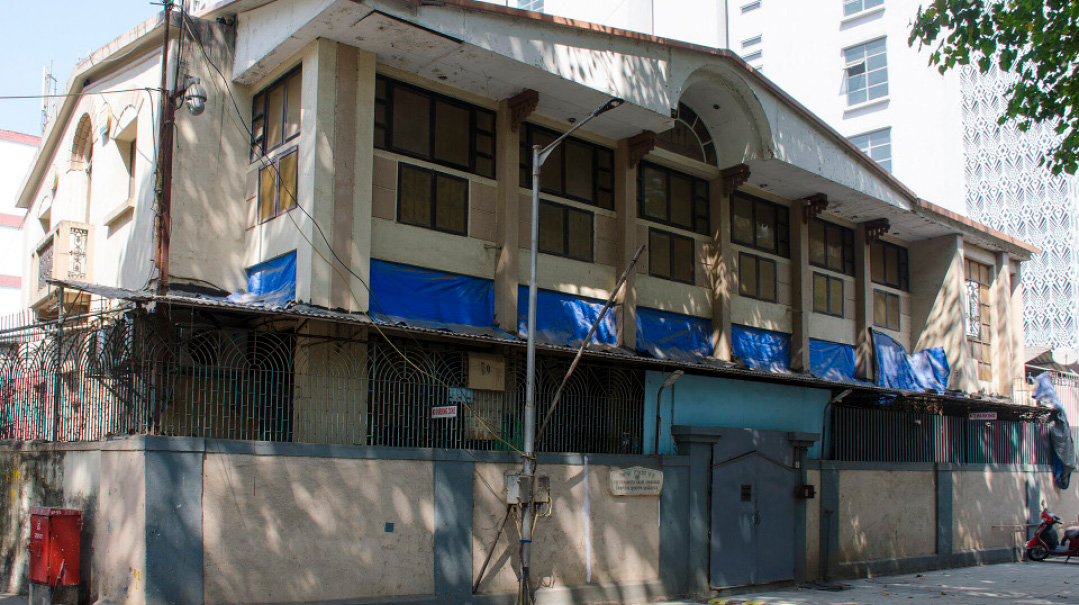
The Tiferet Israel Synagogue is still illuminated by its many windows during the day and candles by night. Klein himself isn’t sure about the story of ancient Jewish refugees at sea who swam to shore and founded the millenia-old community
Seven Sets of Survivors
With Shabbos soon approaching, Klein managed to find an active mikveh at the Tifereth Israel Synagogue, one of the three shuls serving Mumbai’s Bene Israel community. Originally founded in 1886, the shul moved into its current location in 1924, and even now, 100 years later, the sanctuary of Tifereth Israel is illuminated by its many windows during the day, and by candlelight at night.
Klein met a mix of people during the Shabbos meals at Nariman House, where memories of the massacre were strongly felt as the many guests there marked the 15th yahrtzeit together. Because there are quite a few food companies involved in kosher food production in India, particularly in Mumbai, there are usually multiple mashgichim spending Shabbos at the Chabad house; in fact, two of the people killed in the Mumbai massacre — Rabbi Leibish Teitelbaum and Rabbi Bentzion Kruman — were mashgichim.
Other guests at the 15th yahrtzeit Shabbos included individuals in the garment business, American and Israeli tourists, and members of Mumbai’s Bene Israel and Baghdadi communities. Spending Shabbos with local residents gave Klein a better feeling for the general vibe of Jewish Mumbai.
“Because there are multiple shuls and communities, it isn’t like you find the JCC and that is the center of the kehillah,” explains Klein. “The same person who is the gabbai in one shul might be davening in another shul at night, trying to keep it alive. There is no Jewish school or yeshivah. It is not a community that is growing in any sense.”
Many of the people Klein shared Shabbos meals with at Nariman House were also staying at the Taj Mahal Palace, and he joined forces with an Israeli businessman to hold an impromptu Melaveh Malkah at the hotel. They ordered food from Chabad’s on-site dairy restaurant, and an older member of the Bene Israel community shared the story of how their ancestors first came to India.
According to the ancient lore, a group of Jews fleeing the tyrannical rule of Antiochus by sea met up with an epic storm, their boat crashing into the rocks off India’s Konkan coast, south of Bombay. The only survivors, seven men and seven women, swam to shore, becoming the founding members of India’s Bene Israel community.
“While everyone listened to the story and was very respectful, most people didn’t seem to believe it,” notes Klein.
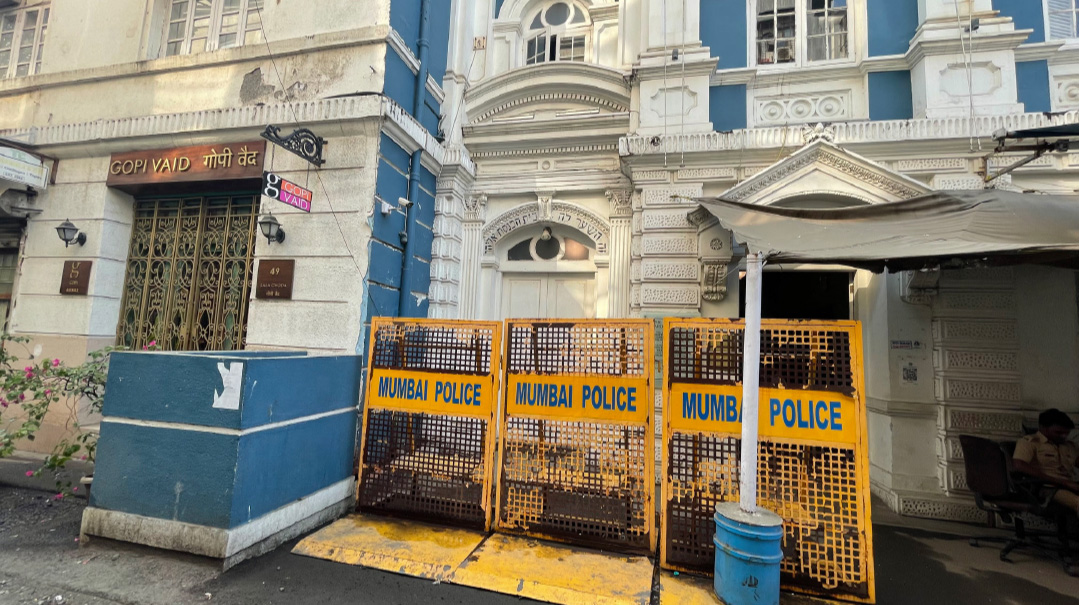
The Knesset Eliyahoo Synagogue. While most of them have been abandoned, Klein estimates that Mumbai once had up to forty shuls
Suits Me
Klein estimated that Mumbai may have as many as 40 shuls, most of which are closed or abandoned. In addition to visiting the Magen David Synagogue, he also managed to daven in the Knesset Eliyahoo Synagogue, the Shaar Harahamim Synagogue, the Shaare Rasoon, and the Tipheret Israel Synagogue. A visit to the Magen Chasidim Synagogue had Klein striking up a conversation with Yishai, an Israeli avreich from Bnei Brak who travels to Mumbai to import suits for the Pesach season.
“He does this every week, traveling to Mumbai Motzaei Shabbos and coming back on Wednesday,” says Klein. “He does embroidery and suits, making them cheap for bnei Torah, but you have to be on top of the factory with every stitch, because if you aren’t there, it doesn’t get done right.”
Klein and Yishai took a rickshaw into the city center, where they visited a huge textile factory.
“There must have been a few hundred workers there working on embroidery machines, and no one said a word to each other,” recalls Klein. “I don’t know how much money they were making there, but they were working very hard.”
Next, the two went to Colaba Causeway, a place reminiscent of an Israeli shuk, located a stone’s throw from Nariman House. Like so many places in Mumbai, the market was a cacophony of sound, with honking horns and street vendors hawking wares of all kinds. Everywhere he turned at Colaba Causeway, Klein was surrounded by the vibrant colors of saris and turbans, and he saw everything from watches to clothing to jewelry to home supplies, all being sold at bargain basement prices — although he got the distinct impression that low cost and low quality went hand in hand. While negotiations can bring down prices significantly, vendors accept only Indian rupees, and expect customers to have exactly the right amount of cash on hand.
“If not, they tell you that just that day it happens they don’t have change, so you end up paying more,” observes Klein.
Some of the people who come to Colaba Causeway are looking for a steal in the literal sense of the word.
“Put away your passport, your wallet, and your phone, because there are a lot of pickpockets there,” notes Klein. “And be wary of the vendors, too. They all talk nicely to you to lure you in, but if you don’t buy anything, they curse you instead.”
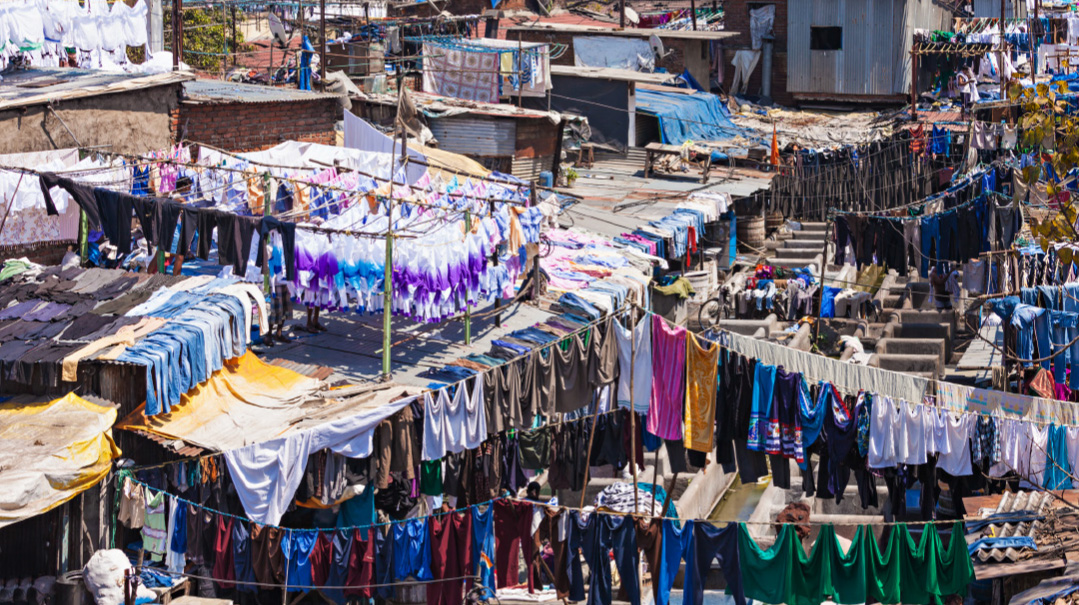
Laundry Day
Preparing for Shabbos, Klein needed to find a place in Mumbai to wash his clothing. Little did he know that Mumbai is home to world’s largest open-air laundry, where hundreds of washermen and women spend hours taking in soiled items from hotels, hospitals, and garment manufacturers and others, sending them back to their owners in pristine condition.
Known as the Mahalakshmi Dhobi Ghat, the laundry was built in 1890, when India was still under British rule. The open-air laundry is located at the Mahalakshmi railroad station in southern Mumbai, and it became the prototype for several others in India and in Asia. From 2011 to 2013, Dhobi Ghat had the distinction of holding the Guinness World Record for the largest number of people washing laundry simultaneously in a single location, with 496 launderers, known as dhobis, washing simultaneously for five consecutive minutes. The real numbers at Dhobi Ghat are exponentially higher on a day-to-day basis, with an estimated 7,000 people washing an estimated 100,000 items, and the laundry does more than $12 million — 1 billion rupees — annually.
While some dhobis have washing machines and dryers, most ply their trade the old-fashioned way — standing knee-deep in troughs of soapy water, soaking, scrubbing, bleaching, and beating dirty items against a washing stone. Once cleaned, laundry is hung on the miles of clotheslines to air-dry in the Indian sun before it is ironed and folded. Laundering goes on at the approximately 107,000-square-foot Dhobi Ghat for as long as 20 hours each day.
“Dhobi Ghat looks like an entire town where all they do is cleaning,” says Klein. “While they don’t usually do laundry for individuals, I got mine back in an hour and a half. They told me it was done ‘mostly traditional, by hand’ and a bit with machine.”
In some spots in Dhobi Ghat, the rows of drying clothing waving overhead in the Indian sun seemed practically endless to Klein. Similarly, the lines and lines of people and machines that did nothing but scrub, rinse, and wring the laundry were unlike anything Klein had ever seen. But while Mumbai’s dhobis may be using methods that are more than a century old to do laundry, they were very astute when it came to getting paid. The washers Klein dealt with refused to name a price for their services, telling him instead to pay whatever he felt was appropriate, a clever tactic aimed at bringing in a higher price.
“It was like, ‘give me a nice tip,’ which probably ended up being more than the amount it actually cost,” notes Klein. “I handed them 20 bucks because they did it very fast for me.”
(Originally featured in Mishpacha, Issue 1002)
Oops! We could not locate your form.



